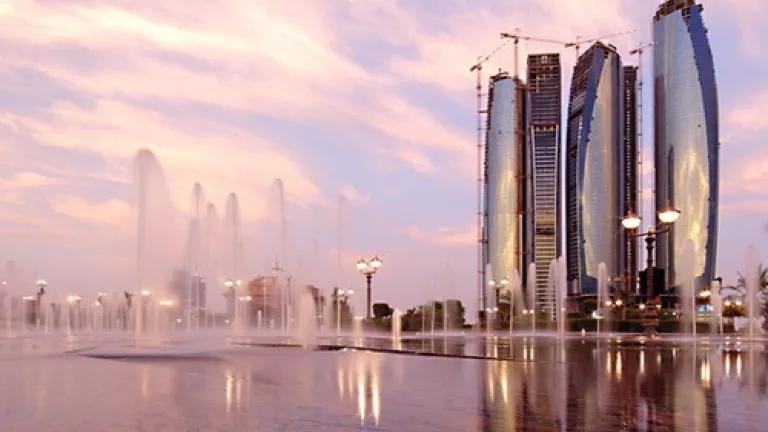
The Middle Eastern city of Abu Dhabi was a booming construction site earlier this week. And while construction continued on new skyscrapers around the city, a truly transformational new architecture was taking shape inside one of the gleaming glass towers. The Abu Dhabi “Ascent” brought together over 1,000 global leaders – including Mayors, CEOs, and Ministers – to catalyze concrete commitments to action on climate change. Former Vice President Al Gore observed that we are at a “tipping point” for significant action on climate change with so many ambitious commitments from such a wide range of leaders.
This new architecture – where not just leaders of national governments but also leaders of cities, business, finance, and civil society make concrete and accountable commitments to climate action – was on full display in Abu Dhabi. And the groundswell of action could not be timelier. The latest science tells us that we are already being considerably affected by climate change and only have 6-10 years for greenhouse gas emissions to peak in order to keep temperature rise within the 2°C considered “safe” for humanity. In other words: now is the time for leadership and bold action.
The Ascent made significant progress toward a major Climate Summit to be held on September 23rd in New York. At the Climate Summit, global leaders will gather to deliver their commitments to action to ensure the world stays below 2°C. The Abu Dhabi meeting showcased many of the “action coalitions,” including on renewable energy, cities, and forests, where leaders across society are joining together to make bold commitments that deliver urgent climate action.
For example, leading mayors from cities around the world will bring an impressive level of local commitments to climate action to September’s Summit. Cities are key platforms to scale up action as they represent 70% of global emissions. City networks, such as C40 – a coalition of the world’s 49 largest cities – are already taking significant actions on the ground and are working in networks to deliver emissions reductions better and faster. The mayors are supported by major foundations, by Michael Bloomberg as the United Nations representative on Cities and Climate Change, and by engaged local citizens to realize their commitments. There are one million mayors in the world – we must ensure they are one million climate activists.
On forests, a number of leading countries and companies are coming together to commit to zero net deforestation by 2020. Companies representing over USD $3 trillion in sales, including Unilever, have made commitments to end deforestation in their supply chains by 2020. Peru has committed to achieve zero net deforestation by 2021. And participants have expressed the need for an “upward spiral” of commitments, which lead to actions, leading to more commitments and results. Forests are critical in fighting climate change because they can provide up to half of the emissions reductions needed by 2030 to stay within 2°C.
This new approach to combatting climate change – securing concrete commitments to action from all leaders across society – is a contrast but also a complement to the traditional treaty approach. While we hope national governments will agree in Paris in December 2015 to a new climate treaty with ambitious targets for beyond 2020, we know that significantly scaling-up climate action cannot wait another 5 years. The time for gradual change is over – the pace of progress needs to be exponentially increased to make the needed transformations.
“Change on climate is in the air.” This was the message the Secretary-General of the United Nations left attendees at the close of the meeting. We might add that change in architecture is in the air as well. However, we know that if we take one element or sector out of the architecture, it will be unstable. That is why we must challenge all our leaders – mayors, governors, presidents, and corporate and civic leaders – to lead. We must ensure that each of our leaders adds their contribution to the new architecture that will deliver urgent climate action now.

